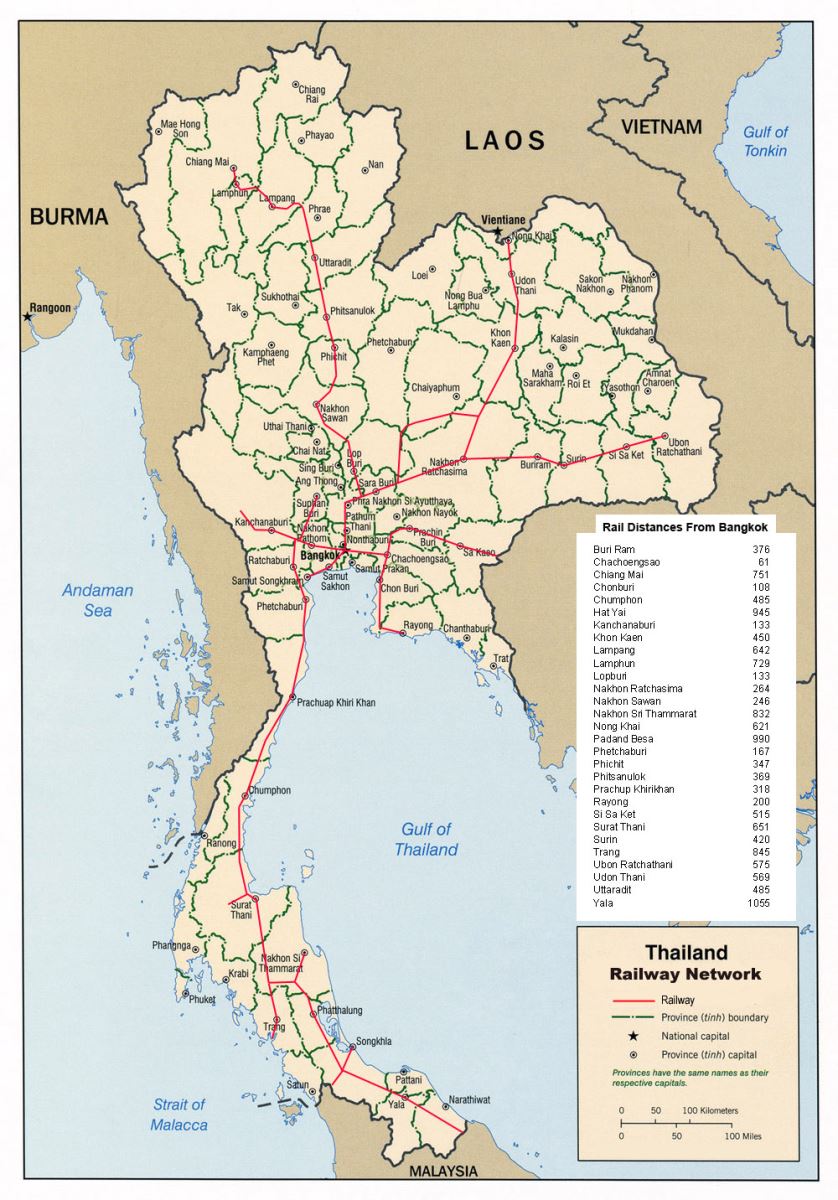
The 4500km rail network is operated by the State Railway of Thailand and covers four main lines: northern, southern, northeastern and eastern. All long-distance trains originate from Bangkok’s Hualamphong Train Station.

The SRT operates passenger trains in three classes – 1st, 2nd and 3rd – but each class varies considerably depending on whether you’re on an ordinary, rapid or express train. In 2016, SRT announced the purchase of 115 modern train carriages with seat-mounted TV screens and more comfortable bathrooms, currently in use on the northern and northeastern routes.

Northern Line – Chiang Mai & Golden Triangle Area. Thai Railways Northern Line Heads directly North from Bangkok. It passes historical places like Ayutthaya (Former Capital), Sukhothai, and popular destinations like Chiang Mai, Thai Railways popular Northern Hub.

Southern Lines – Southern Peninsula Beaches & Islands. Thai Railways Southern Line heads South to Thailand's Southern Peninsula and its popular beach destinations. It also goes to the Thai / Malay Border, with connections into Malaysia and Singapore.
.jpg)
Northeastern Lines – Mekong River & Laos. Thai Railways Northeastern Lines travel to the more rural, less-touristed area of the Northeast (Isaan). The sights there range from colorful festivals, to the famous Khmer Temples of Phanom Rung.
Eastern Lines – East Coast Beaches & Cambodian Border. Thai Railways Eastern Lines travel East through areas between Bangkok and the Cambodian Border. Thai Railways Eastern Line has two main lines that branch off at Chachoeng Sao Junction. The North Eastern Line goes to Aranyaprathet, on the Cambodian Border. The East Coastal Line goes to Pattaya, Sattahip and Mab Taphud, on the Gulf of Thailand Coast.

Western Lines – Kanchanaburi & Myanmar Border. Thailand Railways Western Lines are Thai Railways Shortest Lines, heading West and Northwest from Bangkok. Thailand Railways Western Lines branch off at Nong Pla Duk Junction into two Sub-Lines.

(Source of information: internet)




.JPG)









